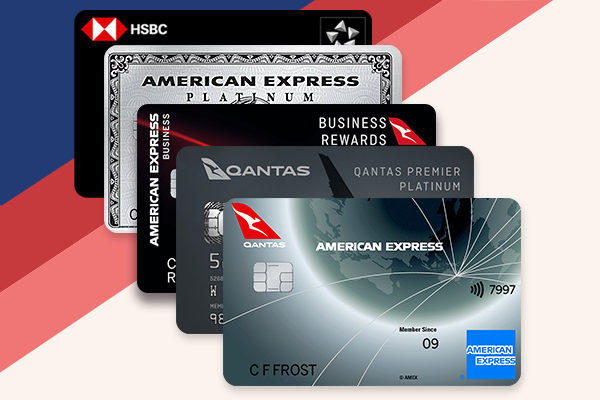You are using an out of date browser. It may not display this or other websites correctly.
You should upgrade or use an alternative browser.
You should upgrade or use an alternative browser.
The lithium battery problem has hit Australia - fire on Domestic Flight
- Thread starter RSD
- Start date
milehighclub
Established Member
- Joined
- Feb 2, 2007
- Posts
- 1,817
Most airlines follow a similar procedure which is use a BCF/Halon then submerge the device in water when the flames/smoke/sounds have stopped. If they don't then a minimal amount of water can be used to make it safe to move. The item is then placed into a receptacle with water.What is the correct procedure to extinguish a lithium battery fire?
RSD
Established Member
- Joined
- Feb 13, 2010
- Posts
- 3,073
- Qantas
- Platinum
I would be sceptical about how much good a BCF is going to do considering that the battery is still going to be in thermal runaway so continuing to produce its own heat and oxygen - but I know the perfect person to put the question to so will see what he comes back with.Most airlines follow a similar procedure which is use a BCF/Halon then submerge the device in water when the flames/smoke/sounds have stopped. If they don't then a minimal amount of water can be used to make it safe to move. The item is then placed into a receptacle with water.
Read our AFF credit card guides and start earning more points now.
AFF Supporters can remove this and all advertisements
milehighclub
Established Member
- Joined
- Feb 2, 2007
- Posts
- 1,817
The manual says it’s to rid of the flames to make it safer to handle to put in the receptacle but does call out it may be ineffective and water might be required. Then it says water should be minimal again to prevent water ending up where it shouldn’t. Then to submerge. When you watch the video, that’s pretty much what happened so was a text book response from what I saw.I would be sceptical about how much good a BCF is going to do considering that the battery is still going to be in thermal runaway so continuing to produce its own heat and oxygen - but I know the perfect person to put the question to so will see what he comes back with.
bPeteb
Established Member
- Joined
- May 24, 2011
- Posts
- 3,226
- Qantas
- Platinum
We were talking about battery banks to a friend on the weekend. She's off to Europe and we were telling her she would most likely need to carry her powerbanks into the cabin. Flying EK I think.
We didn't take one with us to Africa this year or last, or Korea over new year. We both use our phones all day taking photos, using wifi at breakfast, lunch and dinner. bAlt was often tracking us. iPhone 15 pro max and Pixel 9 pro xl, both with eSIMs, so occasional lookups about something if we needed to.
Our usage is our usage. We don't sit there looking at the news, or social media or reading email. Everyone is different of course.
We didn't take one with us to Africa this year or last, or Korea over new year. We both use our phones all day taking photos, using wifi at breakfast, lunch and dinner. bAlt was often tracking us. iPhone 15 pro max and Pixel 9 pro xl, both with eSIMs, so occasional lookups about something if we needed to.
Our usage is our usage. We don't sit there looking at the news, or social media or reading email. Everyone is different of course.
MEL_Traveller
Veteran Member
- Joined
- Apr 27, 2005
- Posts
- 31,460
I think it’s guaranteed that power banks have to be ‘in cabin’ and not luggage? The further restrictions are whether or not they can even be in hand luggage… some airline are now requiring them to be either carried on your person, or in a sealed plastic bag and in the seat pocket in front of you.We were talking about battery banks to a friend on the weekend. She's off to Europe and we were telling her she would most likely need to carry her powerbanks into the cabin. Flying EK I think.
We didn't take one with us to Africa this year or last, or Korea over new year. We both use our phones all day taking photos, using wifi at breakfast, lunch and dinner. bAlt was often tracking us. iPhone 15 pro max and Pixel 9 pro xl, both with eSIMs, so occasional lookups about something if we needed to.
Our usage is our usage. We don't sit there looking at the news, or social media or reading email. Everyone is different of course.
Last edited:
- Joined
- Mar 26, 2017
- Posts
- 2,543
- Qantas
- LT Gold
- Virgin
- Gold
That's our practice, partly as we travel on the Dash 8s out of Canberra and our July cases go in the back and batteries have to be out. I've always been conscious of having them in my backpack, just in case the worst happens. I do find them useful, especially when there are delays and we have our eBooks, tablet and phones needing top ups.I think it’s guaranteed that power banks have to be ‘in cabin’ and not luggage? The further restrictions are whether or not they can even be in hand luggage… some airline are now requiring them to be either carried on your person, or in a sealed plastic bag and in the seat pocket in front of you.
Flyerwin
Active Member
- Joined
- Jul 23, 2022
- Posts
- 521
- Qantas
- Platinum
- Virgin
- Platinum
- Oneworld
- Emerald
I hope not - they are invaluable when going on holidays where you are doing a lot of filming on your phone - I usually run out by mid-afternoon and have to put the phone on a portable magnetic power bank, which works well.I suspect that we are only a small step away from power banks being banned outright.
I've always been conscious of having them in my backpack
Yes, I carry mine in my backpack.
The fallback if power banks are completely banned is that you can use your laptop or even your iPad as a portable battery source for your phone. But they are not something you can carry around easily lol.
jb747
Enthusiast
- Joined
- Mar 9, 2010
- Posts
- 13,488
Very little, but it will knock the fire down on any surrounding material, and may make getting access to the battery easier. The crews are well aware that water is the only real option, but you won’t have a bucket of it available…..I would be sceptical about how much good a BCF is going to do considering that the battery is still going to be in thermal runaway so continuing to produce its own heat and oxygen - but I know the perfect person to put the question to so will see what he comes back with.
SYD
Enthusiast
- Joined
- Oct 5, 2009
- Posts
- 13,694
- Qantas
- Platinum
- Virgin
- Silver
- Oneworld
- Emerald
- Star Alliance
- Gold
OT, but “Low Power” mode is the travellers friend. Set before leaving the Hotel in the morning and can last a good few hours longer. It will turn itself off once sufficiently recharged in the evening.But what if you want to use the phone for what it can do? My new-ish iPhone def needs a top-up during walking-touring around, browsing on bus etc.
- Joined
- Jul 8, 2007
- Posts
- 2,784
- Qantas
- Platinum 1
- Virgin
- Red
- Oneworld
- Emerald
Agree, but efficacy is still highly dependent on the age of the device. Max capacity of my iPhone 12 is 78% of the original battery capacity. So in effect, I've already lost over 20% of the battery's life before I even take it off the charger. Low Power mode helps, but it still won't see me through anything near a day of normal use without the need for a top-up.OT, but “Low Power” mode is the travellers friend. Set before leaving the Hotel in the morning and can last a good few hours longer. It will turn itself off once sufficiently recharged in the evening.
SYD
Enthusiast
- Joined
- Oct 5, 2009
- Posts
- 13,694
- Qantas
- Platinum
- Virgin
- Silver
- Oneworld
- Emerald
- Star Alliance
- Gold
Less than 80% is new battery (or phone) time IMHO.Agree, but efficacy is still highly dependent on the age of the device. Max capacity of my iPhone 12 is 78% of the original battery capacity. So in effect, I've already lost over 20% of the battery's life before I even take it off the charger. Low Power mode helps, but it still won't see me through anything near a day of normal use without the need for a top-up.
- Joined
- Jul 8, 2007
- Posts
- 2,784
- Qantas
- Platinum 1
- Virgin
- Red
- Oneworld
- Emerald
Tell that to my employer!Less than 80% is new battery (or phone) time IMHO.

RSD
Established Member
- Joined
- Feb 13, 2010
- Posts
- 3,073
- Qantas
- Platinum
It would seem to be the only logical step given the number of fires on aircraft that are happening now that are caused by power banks.I suspect that we are only a small step away from power banks being banned outright. Their use has already been restricted in many places.
RSD
Established Member
- Joined
- Feb 13, 2010
- Posts
- 3,073
- Qantas
- Platinum
Agree it would be much easier to get the battery out of the bag if the bag isn't in flames too! A metal jug of water of sufficient size should do the job hopefully.Very little, but it will knock the fire down on any surrounding material, and may make getting access to the battery easier. The crews are well aware that water is the only real option, but you won’t have a bucket of it available…..
- Joined
- Aug 27, 2004
- Posts
- 17,935
- Qantas
- LT Gold
- Virgin
- Red
- Oneworld
- Sapphire
I have no need nor desire to carry a portable power bank with me when travelling (for work or leisure), whether that be in an aircraft or a train to the office. I carry a charger and cables so if I need to recharge I can do so from a power point . I am not so welded to my devices that I have ever found a need to recharge from a another portable rechargeable battery.
I do sometimes use the in-seat charging options for phone/ipad (USB) or laptop on long-haul (110V/220V). I am yet to find myself in a situation where I am inconvenienced by a fully drained device when travelling. But obviously there are many people who have very different device use patterns or requirements that mine.
I do sometimes use the in-seat charging options for phone/ipad (USB) or laptop on long-haul (110V/220V). I am yet to find myself in a situation where I am inconvenienced by a fully drained device when travelling. But obviously there are many people who have very different device use patterns or requirements that mine.
- Joined
- Nov 12, 2012
- Posts
- 31,104
- Qantas
- Platinum
- Virgin
- Platinum
- Star Alliance
- Gold
It would seem to be the only logical step given the number of fires on aircraft that are happening now that are caused by power banks.
As I reported on another thread, KM Malta Airlines prohibit both using a power bank to charge a device, and also from plugging your device into the supplied USB port.
- Joined
- Jul 8, 2007
- Posts
- 2,784
- Qantas
- Platinum 1
- Virgin
- Red
- Oneworld
- Emerald
I have found many of the in-seat USB charging options to be very slow and in some cases, offer little more than the ability to put the battery depletion process on hold. 110V/220V points are a far better proposition, but that's only when they're a) available and b) functional.I do sometimes use the in-seat charging options for phone/ipad (USB) or laptop on long-haul (110V/220V).
To minimise the need to carry different chargers and cables, I have a multi-plug travel adapter that allows for a normal power cable to be plugged into it, in addition to (up to) 2 USB-C and 2 USB-A devices. Have used this to great effect on plenty of flights, but on my last CX trip from HKG to SYD, I was charging my iPhone and Apple Watch (I have an Apple-certified dual charger that terminates at a single AU power plug) and when this was spotted, I was explicitly advised by the cabin crew that I was only permitted to charge a single device at a time via the in-seat 110V/220V point due to "risk of fire". Maybe that's just a CX thing?
- Joined
- Aug 27, 2004
- Posts
- 17,935
- Qantas
- LT Gold
- Virgin
- Red
- Oneworld
- Sapphire
I have a similar device that I use when travelling and plug into mains power when in a hotel room, office, lounge etc. when needed. Have not needed to use it in-flight. I can always leave the airport lounge with sufficient charge for my devices in-flight and immediate post landing needs.I have found many of the in-seat USB charging options to be very slow and in some cases, offer little more than the ability to put the battery depletion process on hold. 110V/220V points are a far better proposition, but that's only when they're a) available and b) functional.
Thankfully I never need to connect my watch to anything other than my arm to recharge it. Just a little natural daylight every few days is more than sufficient. Never gone flat and still holds amazingly accurate time after 15 years daily use.To minimise the need to carry different chargers and cables, I have a multi-plug travel adapter that allows for a normal power cable to be plugged into it, in addition to (up to) 2 USB-C and 2 USB-A devices. Have used this to great effect on plenty of flights, but on my last CX trip from HKG to SYD, I was charging my iPhone and Apple Watch (I have an Apple-certified dual charger that terminates at a single AU power plug) and when this was spotted, I was explicitly advised by the cabin crew that I was only permitted to charge a single device at a time via the in-seat 110V/220V point due to "risk of fire". Maybe that's just a CX thing?
I will not be adversely impacted if portable charging banks are banned from transport on aircraft (in cabin, in pocket, or otherwise). But I certainly do understand that others are more reliant on, and have a need to recharge their technology devices more regularly than me.
Become an AFF member!
Join Australian Frequent Flyer (AFF) for free and unlock insider tips, exclusive deals, and global meetups with 65,000+ frequent flyers.AFF members can also access our Frequent Flyer Training courses, and upgrade to Fast-track your way to expert traveller status and unlock even more exclusive discounts!

AFF forum abbreviations
Wondering about Y, J or any of the other abbreviations used on our forum?Check out our guide to common AFF acronyms & abbreviations.
Currently Active Users
- clarkkent
- QFFHntrGthr
- kearvaigskewer
- moa999
- Pete98765432
- NoName
- ShelleyB
- deka2
- Austman
- ghost
- Miss Sniip
- esquire
- markis10
- N0mad
- FRONT ROWER
- I love to travel
- ALEX LANGTON
- lakes8
- Callmachine
- WilsonM
- Harrison_133
- Dale Eastham
- Peter D
- Mr_Orange
- Mr_Tee
- Timratoo
- Mrsfefe
- vyralmonkey
- MEL_Traveller
- fkcn
- Chrism13
- Koosc
- austgap
- Dudditz
- mhen
- ben95
- DejaBrew
- TMP
- GroupHug
- Sbv72
- QF WP
- Gladstone Tim
- jagungal
- Nanachi
- paddywide
- SOPOOR
- cpatters
- Marlin118
- MVM
- torks
Total: 884 (members: 66, guests: 818)













